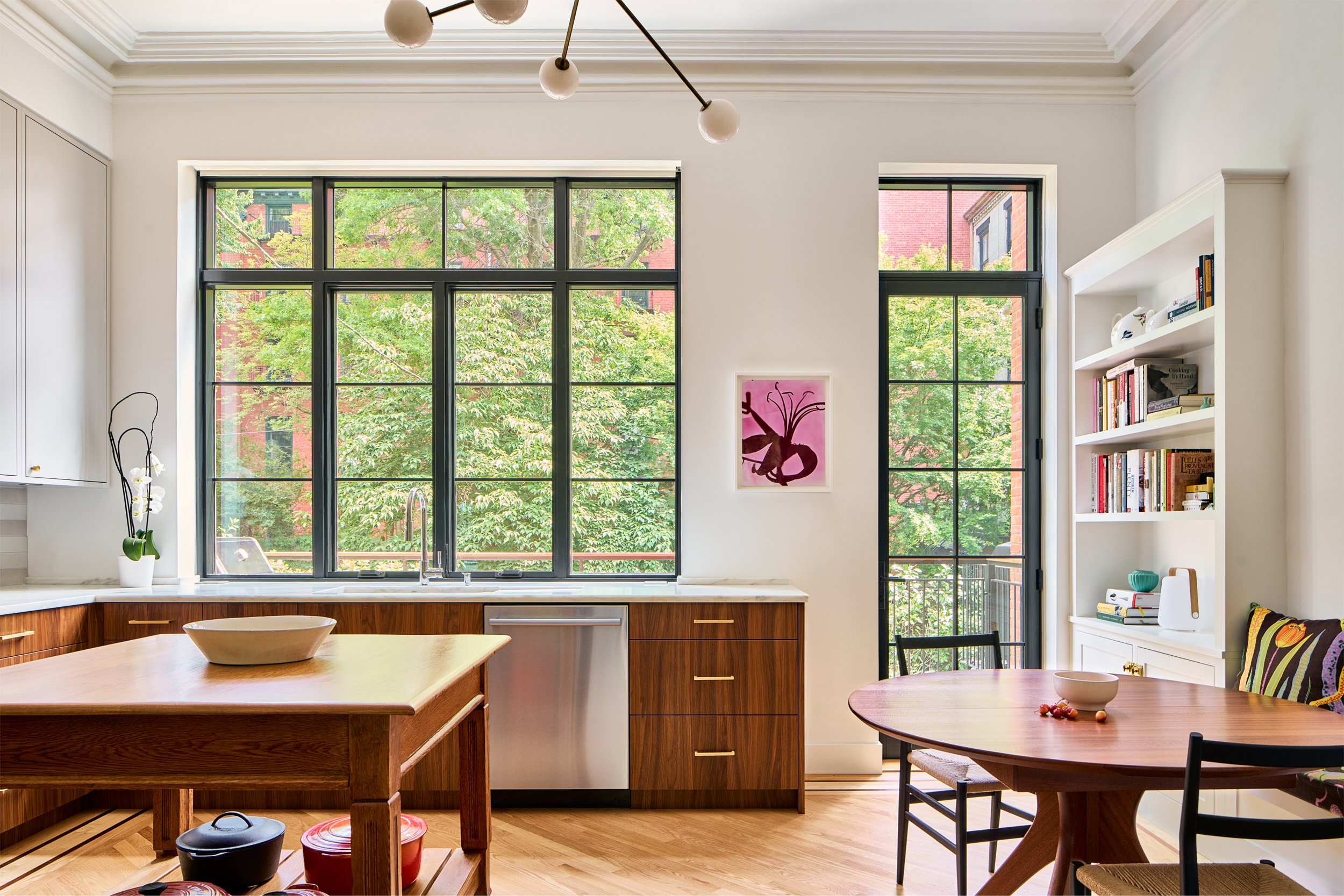Building of the Day: 519 Clinton Avenue
Brooklyn, one building at a time. Name: Private house, now White Memorial Chapels funeral home Address: 519 Clinton Avenue Cross Streets: Fulton Street and Atlantic Avenue Neighborhood: Clinton Hill Year Built: Somewhere around 1896-98 Architectural Style: Craftsman/Arts and Crafts Architect: Unknown Landmarked: No, but much of this block should be The story: When large, private…

Brooklyn, one building at a time.
Name: Private house, now White Memorial Chapels funeral home
Address: 519 Clinton Avenue
Cross Streets: Fulton Street and Atlantic Avenue
Neighborhood: Clinton Hill
Year Built: Somewhere around 1896-98
Architectural Style: Craftsman/Arts and Crafts
Architect: Unknown
Landmarked: No, but much of this block should be
The story: When large, private houses lose their appeal or the ability to stay single family, there are only a few options that seem to be taken. Some people can’t wait to tear them down, but the first option is usually to be chopped up into apartments. That works well for some buildings, not so well for others. Another option is to make it a school or some kind of social service space. In neighborhoods that have fallen from great wealth, a couple of other possibilities also prove popular: turning the house into a house of worship or making it into a funeral parlor.
The mansion as funeral parlor is not a New York phenomenon. In fact, it’s so much a part of our national scene that it’s become immortalized in countless horror movies. The huge old mansion in the middle of town is always a funeral parlor.
And it makes sense for a number of reasons: space, ambiance, location, and space. Rooms for viewings, services, an office, and the dreaded workrooms and mortuary space downstairs. Old mansions also can have beautiful woodwork and stained glass, and play into our collective idea of class, serenity and a dignified send-off.
Our house today started off as the home of a wealthy doctor. By 1896, this was the address for Dr. William Waldo Blackman, a doctor of homeopathic medicine. The good doctor, born in Bridgeport, Conn., graduated from the New York Homeopathic Medical College in 1877. He would later teach anatomy there. This medical school still exists as the New York Medical College, now in Valhalla, N.Y. Dr. Blackman practiced medicine for over 65 years, and in the course of his practice was a mainstay in the Clinton Hill medical community.
At his death, in 1943, at the age of 87, he was still the medical director of the Prospect Heights Hospital. In 1940, he was honored by his alma mater, which named their new anatomy department at its affiliate, Flower and Fifth Avenue Hospital, after him. He was a vice president of that institution and former president of the Kings County Homeopathic Medical College.
Dr. Blackman had a son and daughter. No mention is made of a wife, so he was probably an early widower. His daughter, Elinor, was devoted to social causes her entire life, and was a social worker and assistant director of the Jewish Social Service Association, the family welfare agency of the Federation for the Support of Jewish Philanthropic Societies of New York City. She worked with refugees during World War I, and in 1939 went to Europe to aid in Jewish relief there, getting children who were sponsored abroad out of Europe. Sadly, Elinor died early in life, at 50, in 1942, a year before her father passed away. She had lived in this home her entire life and was never married.
By 1955, this house was a funeral home, called Ebbers & Hill Funeral Chapel. It’s been the White Memorial Chapels since at least 1969, when White bought the building. The house is a unique Arts and Crafts/Craftsman building, not the usual architectural style for the neighborhood, reflecting its relative newness to the block. (It was new for the end of the 19th and early 20th century.) It’s a great house, with classic Craftsman details in the tile roof with its overhanging eaves, clinker brick detailing, large windows and second floor loggia. It all makes for a great streetscape on one of my favorite and usually overlooked Clinton Hill blocks, a block resplendent with a combination of buildings, styles, materials and eras. The magnificent church of St. Luke and St. Matthew, mentioned in an article below, is directly across the street. GMAP








What's Your Take? Leave a Comment